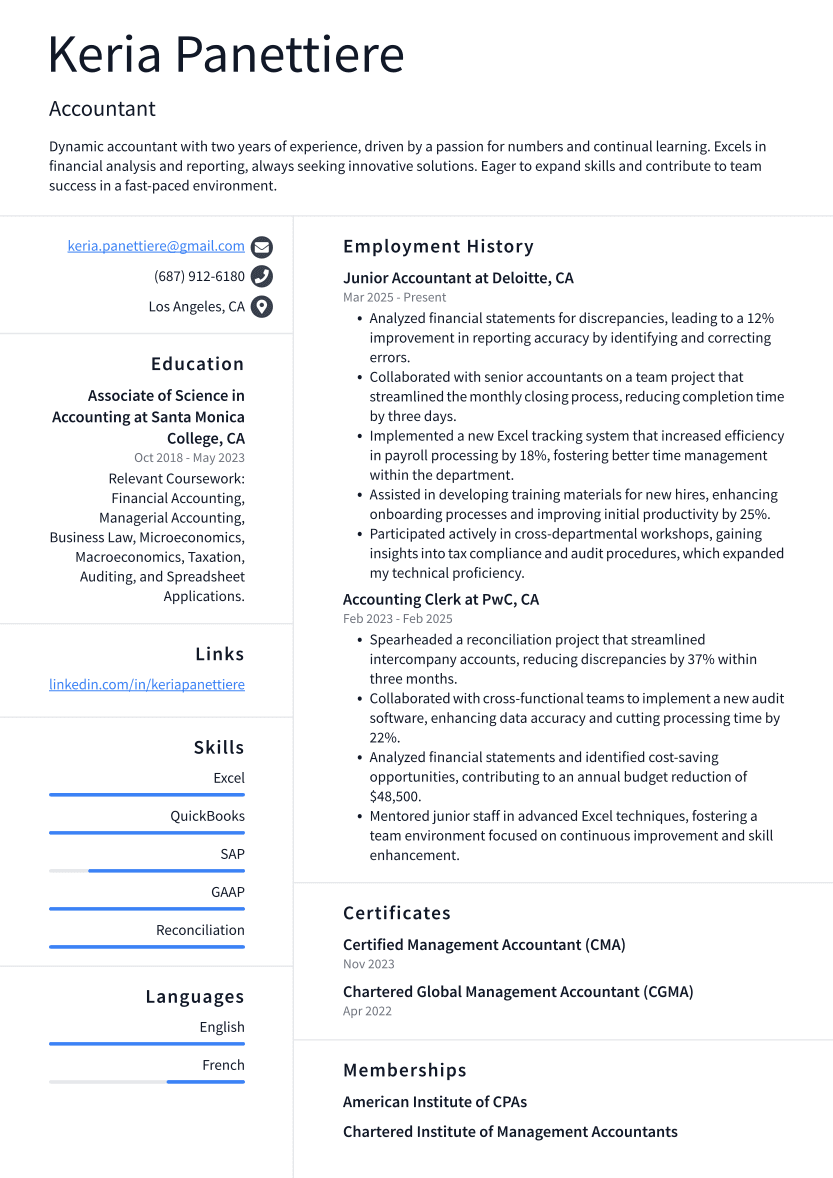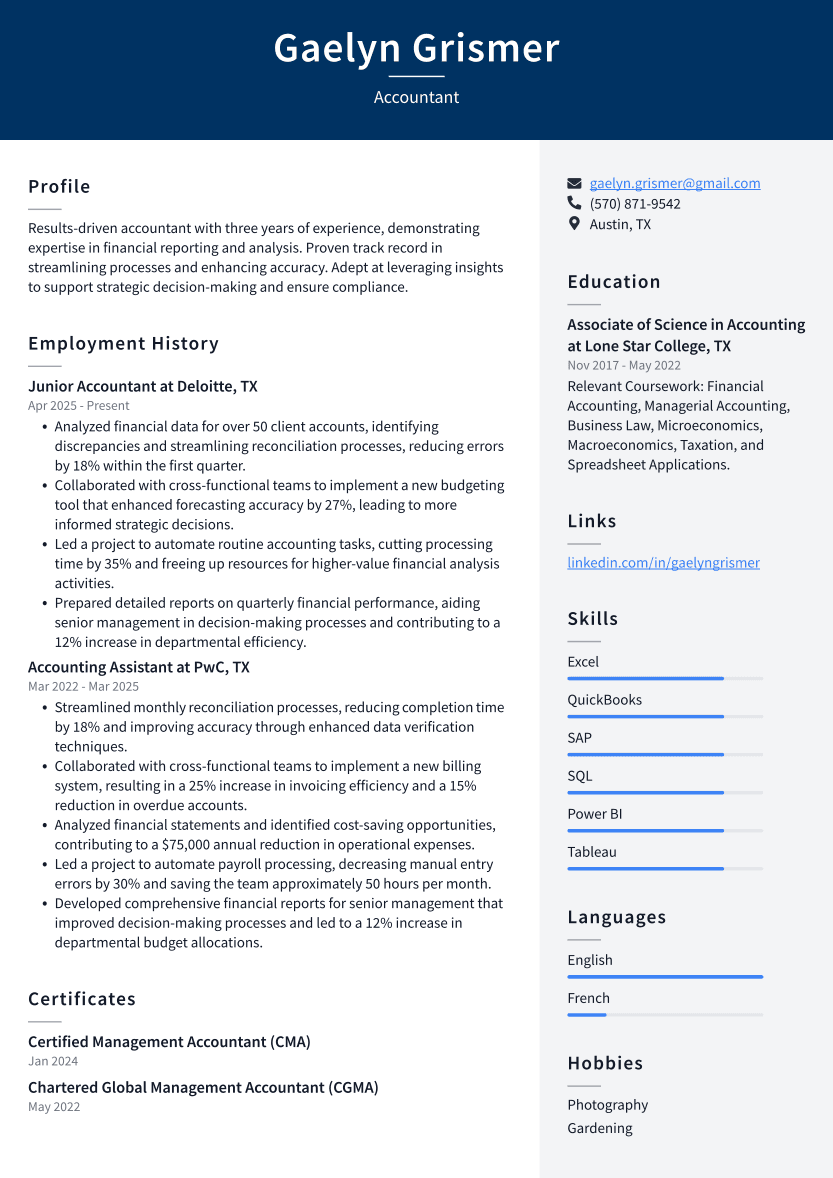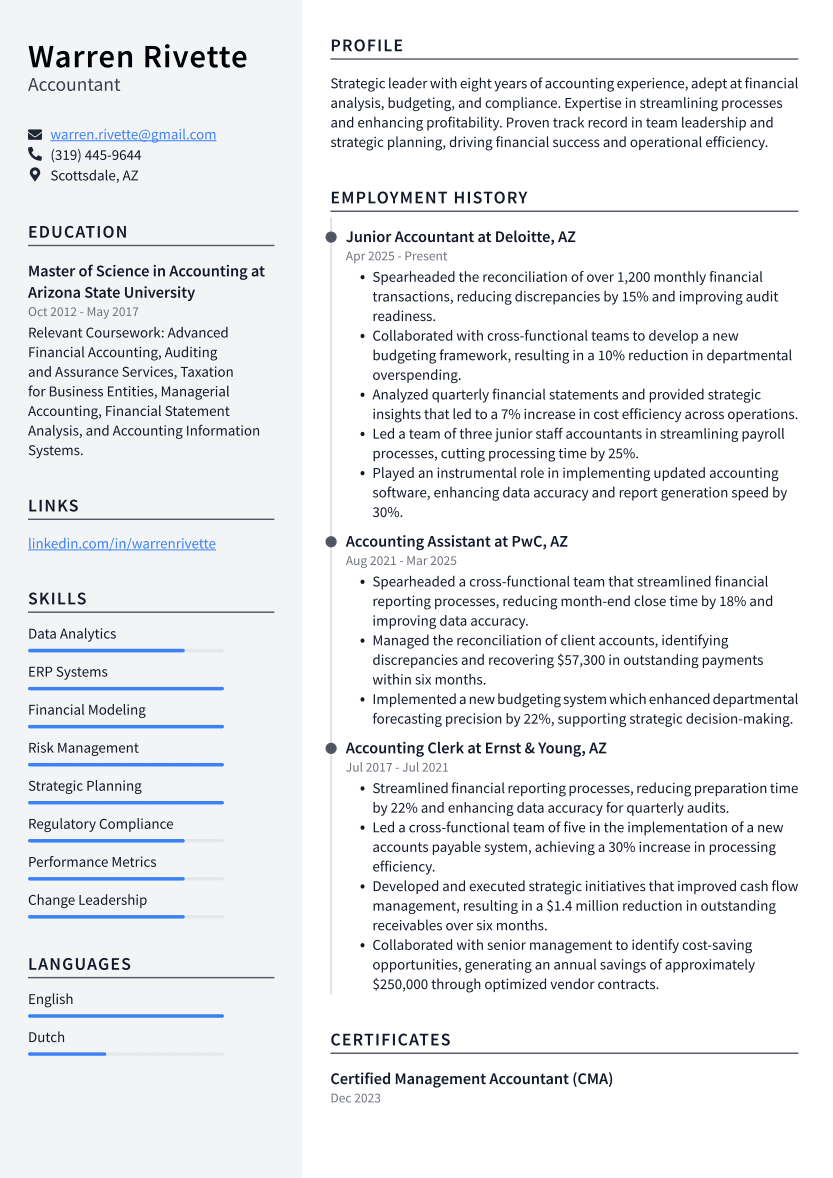Accountant Resume Examples

In the cutthroat world of accounting, a resume needs to be sharper than a pencil and as balanced as, well, a balance sheet. This article aims to help aspiring number-crunchers turn their resume into a ledger of success, spotlighting key elements that will have employers adding up reasons to hire you. Readers will learn how to craft a compelling narrative that numbers can’t ignore.
What to Include on a Accountant Resume
- Contact Information: Essential details for reaching you.
- Summary: Brief snapshot of your professional identity.
- Work Experience: Past roles highlighting accounting expertise.
- Skills: Key abilities relevant to accounting tasks.
- Education: Academic background supporting your qualifications.
For the summary section, highlight your expertise in financial reporting, tax preparation, and budget analysis, emphasizing any experience with specific accounting software like QuickBooks or SAP. In the skills section, list abilities such as attention to detail, proficiency in Excel, and a strong grasp of GAAP principles, showcasing any relevant certifications like CPA or CMA.
Pro Tip: Crafting an accountant resume with precise skills and keywords ensures it sails smoothly through ATS filters, bridging the gap between a digital scan and a human glance.
How to Make Your Accountant Resume Stand Out
Showcase achievements by detailing specific instances where your actions led to measurable improvements, like reducing overhead costs by 15% through process optimization. Emphasize your role in enhancing financial accuracy by implementing a new auditing system, which decreased errors by 20%, underscoring the tangible benefits you brought to the organization.
Structured Sections with Clear Headings: Use bold, easily distinguishable headings like "Experience" or "Education" to guide the reader through your career journey without getting lost in a sea of numbers and details.
Consistent Font and Size: Opt for a professional font like Calibri or Arial, maintaining a uniform size across the document, except maybe your name—a tad bigger to stand out—ensuring clarity without overwhelming flair.
Effective Use of White Space: Balance text with ample margins and spacing between sections, giving the content room to breathe and allowing the reader to focus on key details without sensory overload.
Pro Tip: Tailoring your accountant resume for each application helps highlight the skills and experiences most relevant to the specific job, increasing your chances of standing out.
Resume Example 1: Entry-Level Accountant
An entry-level accountant resume focuses on education, internships, and foundational skills, whereas mid-level or senior resumes highlight years of experience, leadership roles, and specialized expertise.
Resume Example 2: Experienced Accountant
A mid-level accountant resume showcases specialized skills and relevant experience, positioned between the foundational basics of entry-level and the strategic leadership of senior roles.
Resume Example 3: Senior/Leadership Accountant
A senior-level accountant's resume typically highlights strategic leadership, complex financial analysis, and extensive experience managing full-cycle accounting processes, whereas entry or mid-level resumes often focus on foundational skills and direct supervision achievements.
Accountant Resume Do’s, Don’ts, and Checklist
DO'S
- Highlight specific financial achievements, using quantifiable metrics.
- Include relevant certifications or licenses, like CPA or CMA, prominently.
- Tailor the resume to the job description by using industry-specific keywords.
DON'TS
- Don’t list irrelevant work experience that has no connection to accounting tasks. Don’t use vague language or clichés that add no value to your qualifications. Don’t ignore typos or grammatical errors; attention to detail is key.
CHECKLIST
- Highlight relevant accounting skills clearly.
- Tailor each resume to the specific job description.
- Include quantifiable achievements to show impact.
- Avoid overloading with technical jargon.
- Don't send the same resume for every job.
- Refrain from stretching the truth about your experience.






